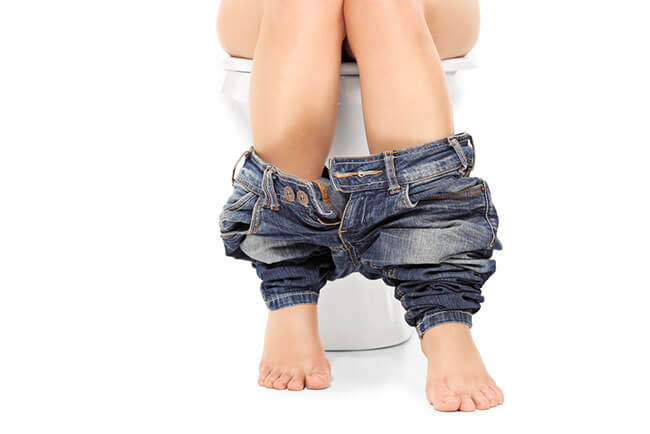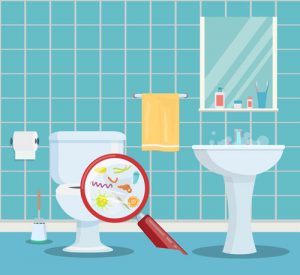We’ve all heard this one before, haven’t we? Some friend of a friend somehow managed to catch genital herpes from a toilet seat in a public restroom. As much as this sounds like an urban legend, many people actually believe it, so let’s explore the plausibility of this scenario and confirm or debunk the myth once and for all.

How Is Herpes (Not) Transmitted?
Herpes is an STD, which means it’s spread through skin-to-skin contact, including vaginal, anal, and oral sex. Herpes is known to cause sores in the affected area and the fluids inside of them actually carry the virus. The infection spreads through immediate contact with those fluids. However, you can also contract the STD from a sexual partner without any visible sores. The virus usually enters the body through mucous membranes but also through damaged tissue, such as cuts, tears, and scrapes in the skin.
With all this in mind, contracting genital herpes from a toilet seat is extremely unlikely. Outside of the body, the virus dies very quickly, which is why the CDC goes as far as to say it’s even impossible to get this STD through toilet seats, towels, and other objects found in bathrooms and public restrooms. Needless to say, however, if you suspect recent exposure, you should perform a dedicated herpes test as soon as possible.
What Types Of Bacteria ARE On Toilet Seats?

Although you don’t have to worry about contracting herpes from a toilet seat, there are still a lot of bacteria and viruses you can pick up if you’re not careful. The most common “dispersal method” for toilet germs is the toilet’s intense flush. With every flush, a whole slew of microbial droplets is pushed outside the toilet, landing on nearby surfaces.
Here’s a list of viruses and bacteria that can be found in and around toilets:
- Streptococcus – This bacterium causes strep throat and necrotizing fasciitis.
- Shigella bacteria – This bacterium affects your digestive system and usually present itself with diarrhea.
- Staphylococcus – Better known as staff, this bacterium is easily passed from one person to the next. One of its types (MRSA) can live on surfaces for up to 3 months.
- Escherichia coli – Also known as E. coli, this bacterium usually inhabits the intestines.
- Norovirus – This is a common and highly contagious virus that can survive almost 2 weeks on outside surfaces.
- Influenza – Better known as the flu virus, it can live 2 or 3 days on nonporous surfaces. It can also survive on door handles, remote controls, phones, and many other everyday objects.
How To Protect Yourself From Toilet Germs?
If you want to avoid the most common toilet germs, especially when using public restrooms, we recommend following a couple of useful tips:
- Make sure the restroom features paper towel covers – Fecal spray pushed from the toilet can land on toilet paper and stay there throughout its entire lifespan, so look for stalls where plastic or metal guards completely cover paper towels.
- Use antiseptic wipes – Paper toilet seat covers might be convenient, but they’re definitely not very effective. Most germs are tiny enough to slip through the porous fibers anyway. On the other hand, one study proved that running an antiseptic wipe across the surface of the seat can reduce the number of germs by fiftyfold.
- Wash your hands – Although everybody claims they wash their hands after using the toilet, a recent survey discovered that only 83% of people actually do. Needless to say, do not take shortcuts when it comes to hand-washing techniques.
- Flush with your shoe – Get familiar with this technique and start using your foot to flush the toilet.
- Only touch surfaces with a paper towel – Once you’ve washed your hands, do not touch the faucet or door without a paper towel.
- Never touch dryer vents – We advise against using hot air dryers in the first place, but if you absolutely have to use them, at least turn on the machine with your elbow.
